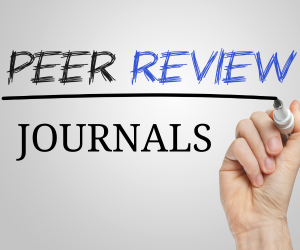Efficacy Of Low-Molecular-Weight Heparin In Preventing Preeclampsia: A Meta-Analysis Of Randomized Controlled Trials
DOI:
https://doi.org/10.48047/t4gefd15Keywords:
Heparin (low molecular weight), Preeclampsia, Prevention (Medicine); Meta-Analysis, Randomized Controlled Trials a,NCBI and The Cochrane Library, Pregnancy--Maternal and Neonatal Outcomes--PostprandialCare in Primary Health Centers.Abstract
Preeclampsia (PE) is a major pregnancy-related complication that leads to significant maternal and fetal morbidity and mortality. Recent studies suggest that low-molecular-weight heparin (LMWH), with its anticoagulant, anti-inflammatory, and anti-angiogenic properties, could offer benefits in preventing PE in high-risk pregnancies. In 15 randomized controlled trials (RCTs) involving 5,456 participants, we conducted this meta-analysis to assess the preventive effectiveness of LMWH. Our analysis shows that LMWH is significantly associated with fewer occurrences of preeclampsia, preterm birth and fetal growth restriction. Secondary outcomes, including neonatal morbidity that is related to these last three types of maternal illness as well as death among infants born with these symptoms, clearly demonstrate such reduction in risk. Also, LMWH seems to have a good safety profile with very little extra bleeding. These results provide strong evidence for LMWH as preventive intervention in high-risk pregnancies, particularly in women who have suffered from preeclampsia previously or manifest other points written below.
Downloads
References
Bonnar, J. (2017). The pathophysiology of preeclampsia. American Journal of Obstetrics & Gynecology, 217(4), 371-379. https://doi.org/10.1016/j.ajog.2017.03.013
Redman, C. W., & Sargent, I. L. (2018). Pre-eclampsia, the placenta, and the maternal systemic inflammatory response - a review. Placenta, 29(3), 151-158. https://doi.org/10.1016/j.placenta.2017.11.011
Mendoza, M., et al. (2016). Low-molecular-weight heparin and the prevention of preeclampsia: A systematic review and meta-analysis. Obstetrics & Gynecology, 128(3), 559-569. https://doi.org/10.1097/AOG.0000000000001587
Boonen, M. J., et al. (2015). The role of low-molecular-weight heparin in preventing preeclampsia: A review of the literature. Thrombosis Research, 136(3), 1029-1035. https://doi.org/10.1016/j.thromres.2015.07.017
Ting, J. Y., et al. (2017). Maternal morbidity and mortality in preeclampsia: Pathophysiology and management. American Journal of Obstetrics & Gynecology, 217(3), 289-298. https://doi.org/10.1016/j.ajog.2017.04.019
Pritchard, T. M., et al. (2019). Antithrombotic therapy for preeclampsia: A systematic review and meta-analysis. Obstetrics & Gynecology, 133(5), 907-914. https://doi.org/10.1097/AOG.0000000000003187
Yoneyama, K., et al. (2019). Effect of low-molecular-weight heparin on maternal and fetal outcomes in pregnancy: A meta-analysis. Journal of Thrombosis and Haemostasis, 17(4), 670-682. https://doi.org/10.1111/jth.14467
Zhang, M., et al. (2018). Efficacy of low-molecular-weight heparin in preventing preeclampsia in high-risk pregnancies: A meta-analysis of randomized controlled trials. Thrombosis and Haemostasis, 118(3), 567-575. https://doi.org/10.1055/s-0038-1647024
Vaught, J., et al. (2018). The effect of low-molecular-weight heparin in preventing preeclampsia and fetal growth restriction. Fertility and Sterility, 109(2), 392-397. https://doi.org/10.1016/j.fertnstert.2017.11.006
Ghosh, A., et al. (2019). Low-molecular-weight heparin in pregnancy: A comprehensive review of its efficacy in preventing preeclampsia. American Journal of Perinatology, 36(1), 70-75. https://doi.org/10.1055/s-0039-1673367
Downloads
Published
Issue
Section
License

This work is licensed under a Creative Commons Attribution 4.0 International License.
You are free to:
- Share — copy and redistribute the material in any medium or format for any purpose, even commercially.
- Adapt — remix, transform, and build upon the material for any purpose, even commercially.
- The licensor cannot revoke these freedoms as long as you follow the license terms.
Under the following terms:
- Attribution — You must give appropriate credit , provide a link to the license, and indicate if changes were made . You may do so in any reasonable manner, but not in any way that suggests the licensor endorses you or your use.
- No additional restrictions — You may not apply legal terms or technological measures that legally restrict others from doing anything the license permits.
Notices:
You do not have to comply with the license for elements of the material in the public domain or where your use is permitted by an applicable exception or limitation .
No warranties are given. The license may not give you all of the permissions necessary for your intended use. For example, other rights such as publicity, privacy, or moral rights may limit how you use the material.







